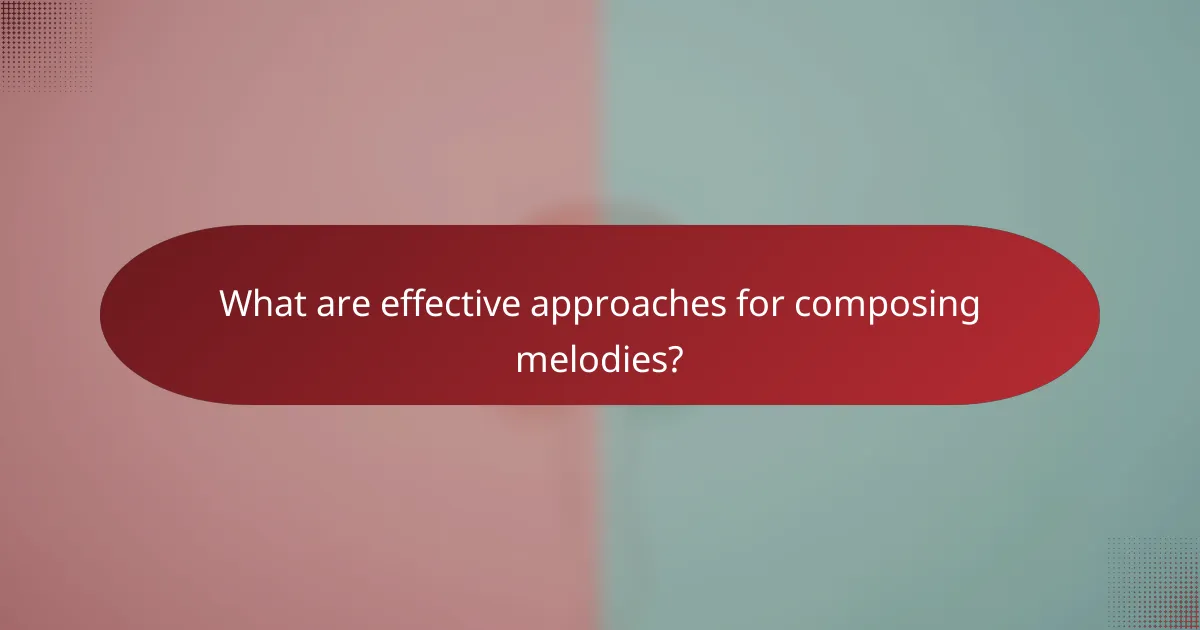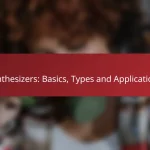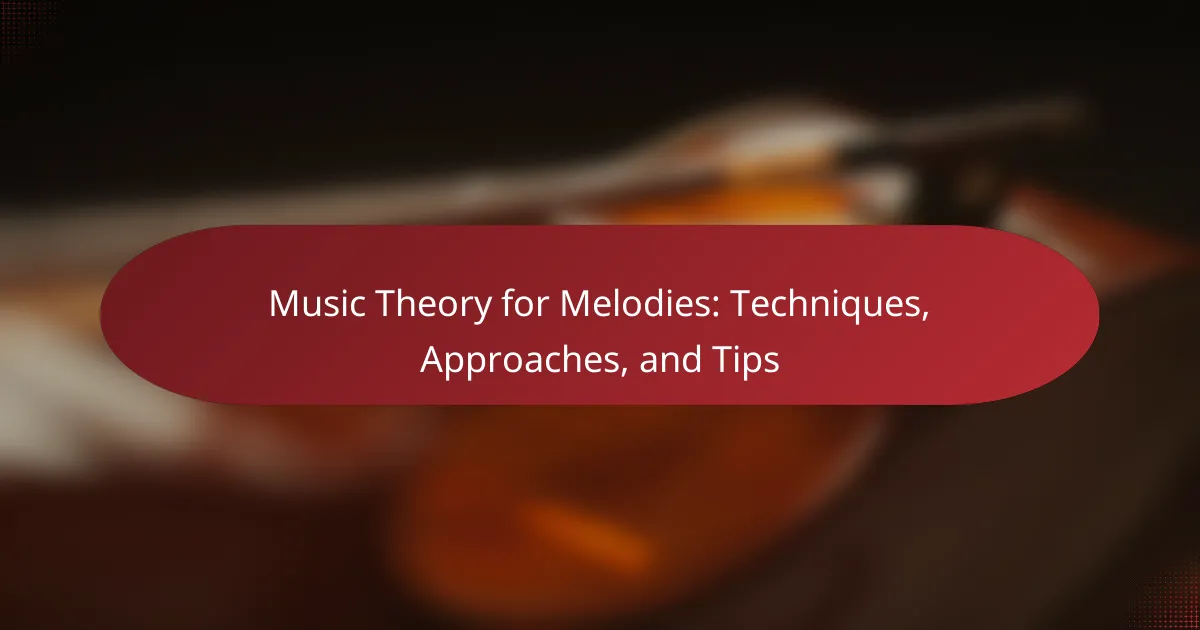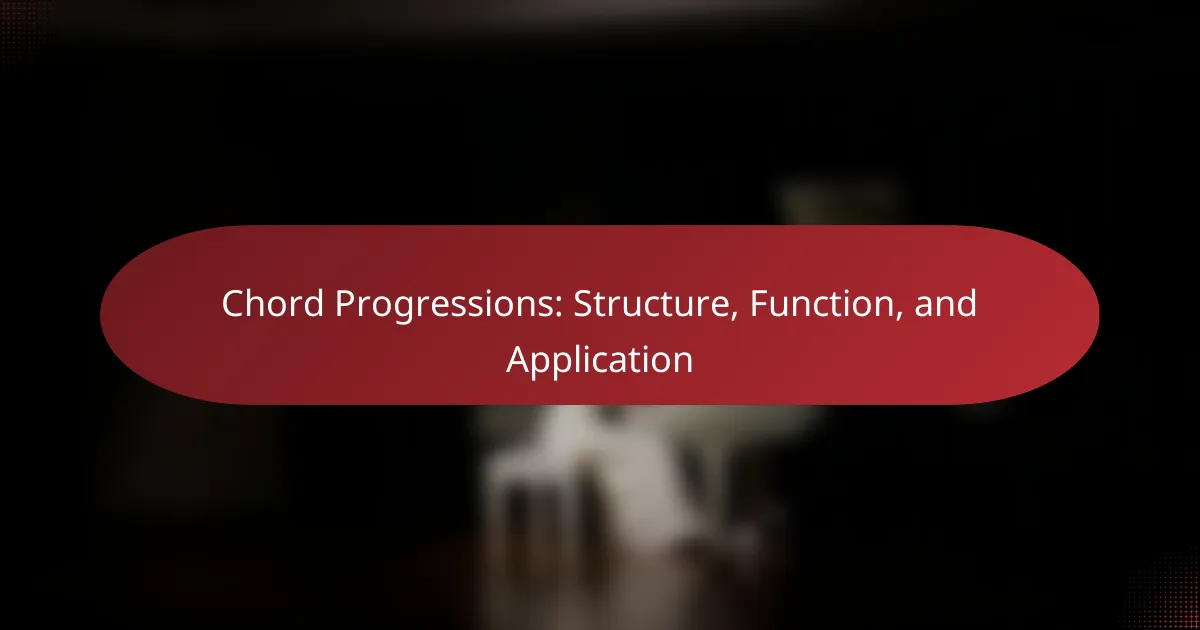Understanding music theory is essential for crafting captivating melodies, as it provides the foundation for exploring relationships between notes, chords, and musical structures. Techniques such as melodic contour, rhythmic variation, and motivic development can significantly enhance your melody creation process. By applying structured approaches and leveraging theoretical concepts, you can develop engaging and memorable musical phrases tailored to your unique style.

What techniques enhance melody creation?
Techniques that enhance melody creation include focusing on melodic contour, rhythmic variation, harmonic support, motivic development, and the use of scales. Each of these elements contributes to crafting engaging and memorable melodies.
Melodic contour
Melodic contour refers to the shape and direction of a melody as it moves through pitch. A well-defined contour can create emotional impact and help listeners remember the melody. Consider using ascending and descending patterns to create contrast and interest.
For example, a melody that starts low and gradually ascends can evoke feelings of hope or excitement, while a descending contour might convey sadness or resolution. Aim for a balance of steps and leaps to maintain listener engagement.
Rhythmic variation
Rhythmic variation involves altering the timing and duration of notes within a melody. This technique can add complexity and prevent monotony. Experiment with syncopation, rests, and varying note lengths to create a more dynamic rhythmic feel.
For instance, introducing a short, unexpected rest can create tension and anticipation, enhancing the overall impact of the melody. Avoid sticking to a single rhythmic pattern for too long; instead, mix different rhythms to keep the listener’s interest alive.
Harmonic support
Harmonic support provides the underlying chords that complement a melody. Choosing the right chords can enhance the emotional quality and direction of the melody. Ensure that the harmony aligns with the melody’s contour and rhythmic structure.
Using common chord progressions, such as I-IV-V-I, can create a familiar foundation, while more complex progressions can add depth. Be mindful of the relationship between melody and harmony; they should work together to create a cohesive musical experience.
Motivic development
Motivic development involves taking a small musical idea or motif and expanding upon it throughout the melody. This technique helps create unity and coherence in your composition. Consider repeating, transposing, or varying the motif to maintain listener engagement.
For example, if you have a catchy four-note motif, you might change its rhythm or pitch in subsequent phrases. This approach not only reinforces the motif but also allows for creative exploration within the melody.
Use of scales
The use of scales is fundamental in melody creation, as they provide the framework for note selection. Familiarize yourself with various scales, such as major, minor, and pentatonic, to expand your melodic possibilities. Each scale has its own character and emotional quality.
When composing, try starting with a specific scale and explore different melodic ideas within it. This can lead to unique melodies and help you avoid common pitfalls associated with overused note patterns. Experimenting with modes can also yield fresh and interesting results.

How can I apply music theory to melodies?
Applying music theory to melodies involves understanding the relationships between notes, chords, and musical structure. By leveraging concepts like intervals, chord progressions, and tension, you can create more engaging and memorable melodies.
Understanding intervals
Intervals are the distances between two notes and are foundational in melody creation. They define the character of a melody, influencing its emotional impact. For instance, a minor third interval often conveys sadness, while a major third suggests happiness.
When constructing melodies, consider using a mix of small intervals (like seconds and thirds) for smoothness and larger intervals (like sixths and sevenths) for contrast. A common practice is to start with a few small intervals and then introduce larger leaps to maintain listener interest.
Utilizing chord progressions
Chord progressions provide a harmonic framework that supports melodies. A well-chosen progression can enhance the emotional quality of your melody. Common progressions, such as I-IV-V-I or ii-V-I, create a sense of resolution and familiarity.
Experiment with different progressions to see how they affect your melody. For example, using a minor chord progression can give a darker tone, while major chords typically sound brighter. Keep in mind that the relationship between melody and harmony is crucial; ensure your melody notes fit within the chords you choose.
Implementing tension and release
Tension and release are essential for creating dynamic melodies that engage listeners. Tension can be built through dissonance, rhythmic variation, or unexpected note choices, while release occurs when the melody resolves to consonant notes or familiar patterns.
To effectively implement tension and release, consider using techniques like suspensions or anticipations. For example, delaying the resolution of a melody note can create anticipation, making the eventual resolution more satisfying. Balance is key; too much tension without release can frustrate listeners, while too much resolution can lead to predictability.

What are effective approaches for composing melodies?
Effective approaches for composing melodies include structured methods like top-down and bottom-up composition, as well as loop-based creation. Each technique offers unique benefits and can be tailored to fit various musical styles and personal preferences.
Top-down composition
Top-down composition starts with a broad idea or theme, which is then developed into a complete melody. This approach often involves outlining the overall structure first, such as deciding on the form (verse, chorus, bridge) before filling in the details.
When using this method, consider the emotional arc you want to convey. For instance, you might choose a major key for a joyful theme and a minor key for something more somber. A common pitfall is getting too attached to the initial concept, which can hinder creativity.
Bottom-up composition
Bottom-up composition begins with small musical ideas or motifs that are gradually expanded into a full melody. This technique allows for organic growth, as each small idea can lead to new directions and variations.
To effectively use this method, start by experimenting with a few notes or rhythms. You can then build on these elements by layering harmonies or altering rhythms. Avoid overcomplicating early ideas; simplicity often leads to more memorable melodies.
Loop-based creation
Loop-based creation involves crafting short, repetitive musical phrases that can serve as the foundation for a melody. This technique is popular in electronic music and can help establish a groove or theme quickly.
When using loops, focus on creating catchy hooks that can be easily repeated. Consider varying the dynamics or instrumentation to keep the listener engaged. A common mistake is to rely too heavily on loops without adding variation, which can make the music feel stagnant.

What tools assist in melody writing?
Several tools can enhance the melody writing process, including digital audio workstations (DAWs), notation software, and mobile apps designed for musicians. These resources help streamline composition, provide creative inspiration, and facilitate the organization of musical ideas.
Digital audio workstations
Digital audio workstations (DAWs) are software platforms that allow musicians to record, edit, and produce audio. Popular DAWs like Ableton Live, Logic Pro, and FL Studio offer features such as MIDI sequencing, audio manipulation, and a variety of virtual instruments that can inspire melody creation.
When using a DAW, consider the workflow that best suits your style. Experiment with different arrangements and sound libraries to find unique melodic ideas. Many DAWs also support plugins, which can expand your sonic palette and enhance creativity.
Notation software
Notation software, such as Sibelius, Finale, or MuseScore, provides a way to write and visualize music notation. These programs allow composers to create sheet music, making it easier to share melodies with other musicians or perform them live.
When selecting notation software, look for features like playback capabilities, ease of use, and compatibility with other tools. Some software offers a free version, which can be a good starting point for beginners. Keep in mind that learning to use notation software effectively may take some time, so practice regularly to improve your skills.
Mobile apps for musicians
Mobile apps for musicians can be invaluable for melody writing on the go. Applications like GarageBand, Notion, and StaffPad allow users to compose music directly from their smartphones or tablets, making it easy to capture ideas anytime inspiration strikes.
When choosing a mobile app, consider its features, such as MIDI input, audio recording, and notation capabilities. Many apps offer user-friendly interfaces and tutorials, which can help you get started quickly. However, be cautious of apps that may have limited functionality compared to desktop software, and ensure they meet your specific needs for melody writing.

What criteria should I consider when learning melody techniques?
When learning melody techniques, consider your current skill level, the specific genre you want to explore, and the various approaches that can enhance your melodic writing. Understanding these criteria will help you focus your practice and develop a more effective learning strategy.
Skill level assessment
Assessing your skill level is crucial for selecting appropriate melody techniques. Beginners should focus on fundamental concepts such as scale construction and basic rhythmic patterns, while intermediate and advanced musicians can explore more complex techniques like counterpoint and modal interchange.
To evaluate your skill level, reflect on your familiarity with music theory, your ability to play an instrument, and your experience with composing melodies. A simple self-assessment can include identifying your comfort with scales, intervals, and chord progressions.
Genre-specific techniques
Different music genres often employ unique melodic techniques that can greatly influence your composition. For instance, pop music frequently utilizes catchy hooks and repetitive phrases, while jazz may incorporate improvisation and complex chord changes.
To effectively learn genre-specific techniques, listen to a variety of songs within your chosen genre and analyze their melodic structures. Take notes on common patterns, motifs, and the emotional impact of different melodies. This practice will help you internalize the stylistic nuances that define the genre.










